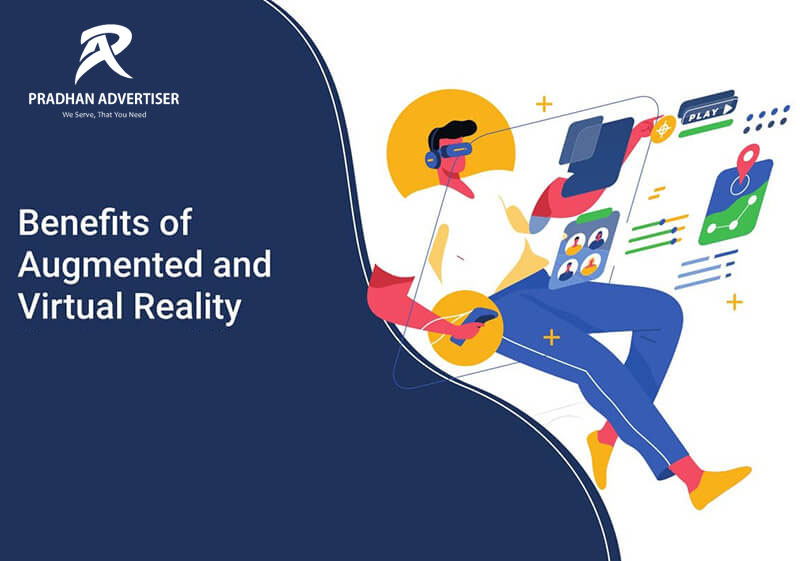- Have any query
- +91 8763 781 333
The Future of Gaming in Advertising

THE ABC’S OF DIGITAL MEDIA MARKETING: HOW TO EFFECTIVELY LEVERAGE NEW TECHNOLOGY TO GROW YOUR BUSINESS
August 6, 2022
“THE EVOLUTION OF DIGITAL MEDIA MARKETING: HOW THE WAY WE MARKET HAS CHANGED”
August 25, 2022The Future of Gaming in Advertising: How Virtual Reality and Augmented Reality Will Revolutionize Marketing
Virtual and augmented reality are poised to revolutionize how businesses market their products and services. These technologies offer new and exciting ways to engage consumers, allowing them to interact with brands in ways never before possible. Marketers are already beginning to experiment with virtual reality and augmented reality as a way to create more immersive and engaging advertising experiences. As these technologies continue to evolve, we can expect to see even more innovative and creative uses of virtual and augmented reality in marketing.
1. What is virtual reality (VR) and augmented reality (AR)?

Virtual reality (VR) and augmented reality (AR) are both types of computer-generated simulations that allow users to interact with digital environments. VR immerses users in a completely virtual world, while AR augments the users’ real-world surroundings with digital elements.
VR has been around since the late 1980s, but has only recently become more popular with the development of affordable headsets like the Oculus Rift and HTC Vive. AR is a newer technology, and is still in its early days. However, it has already found a number of practical applications, such as in the field of medicine.
Both VR and AR offer a lot of potential for future growth. They are both exciting technologies that have the potential to revolutionize the way we interact with the digital world.
2. How is VR and AR being used in advertising?

Virtual reality (VR) and augmented reality (AR) are being used more and more in advertising. VR can be used to create an immersive experience for the viewer, while AR can be used to overlay digital content on top of the real world.
There are a number of ways that VR and AR can be used in advertising. For example, a company could create a VR ad that allows the viewer to explore a product in a virtual environment. Alternatively, an AR ad could be used to show a customer how a product would look in their home before they purchase it.
VR and AR have the potential to be a powerful tool for advertisers. They can be used to create engaging and immersive experiences that can help to increase brand awareness and promote products.
3. What are the benefits of VR and AR in advertising?

Virtual reality (VR) and augmented reality (AR) technologies are becoming more and more popular, with a growing number of businesses using them to create immersive advertising experiences. Here are some of the benefits of VR and AR in advertising:
1. Immersive experiences: VR and AR create incredibly immersive experiences, which can be very effective in advertising. When users are fully engaged in an experience, they are more likely to remember the advertising message.
2. Increased engagement: VR and AR can also help to increase engagement with advertising. By immersing users in an experience, businesses can hold their attention for longer and get them to interact with the advertising content.
3. Greater reach: VR and AR can be used to reach a wider audience than traditional advertising methods. They can be used to target specific demographics or to reach people in locations that would be difficult or expensive to reach with other methods.
4. Greater impact: VR and AR have the potential to create a greater impact on users than traditional advertising. They can evoke stronger emotions and create a more lasting impression.
5. Increased ROI: VR and AR can be more effective and efficient than traditional advertising methods, resulting in a higher ROI for businesses.
Overall, VR and AR offer a number of benefits for businesses looking to create immersive advertising experiences. They are more engaging, effective, and efficient than traditional advertising methods. And have the potential to create a greater impact on users.
4. What are the challenges of VR and AR in advertising?

The challenges of VR and AR in advertising are many. The first is that the technology is still in its early stages, and is not always reliable. VR and AR headsets can be heavy and uncomfortable, and they can also be expensive. The graphics and animations in VR and AR advertising can also be jarring and not very realistic. Another challenge is that most people are still not familiar with VR and AR, so they may not understand what the ads are trying to show them. Finally, VR and AR advertising can be very intrusive, and people may not like the idea of being completely immersed in an ad.
5. How will VR and AR revolutionize marketing?

Virtual reality (VR) and augmented reality (AR) are transforming the way people experience the world. VR can create immersive, virtual environments that allow people to explore and interact with digital worlds. AR can overlay digital information onto the physical world, providing a more contextual experience.
The potential for VR and AR in marketing is tremendous. They can be used to create immersive product demonstrations, to provide more engaging customer experiences, and to create more effective marketing communications. VR and AR can also be used to create more effective retail environments, to provide more engaging product demonstrations, and to improve customer service.
As VR and AR headsets become more widespread, and as the technology continues to improve, the potential for VR and AR in marketing will only continue to grow.





